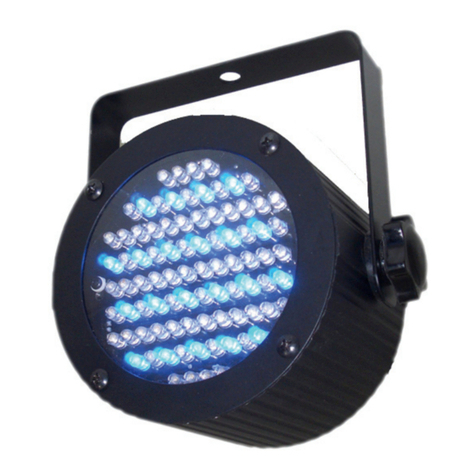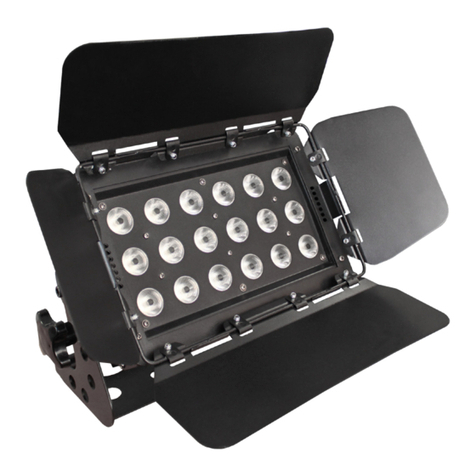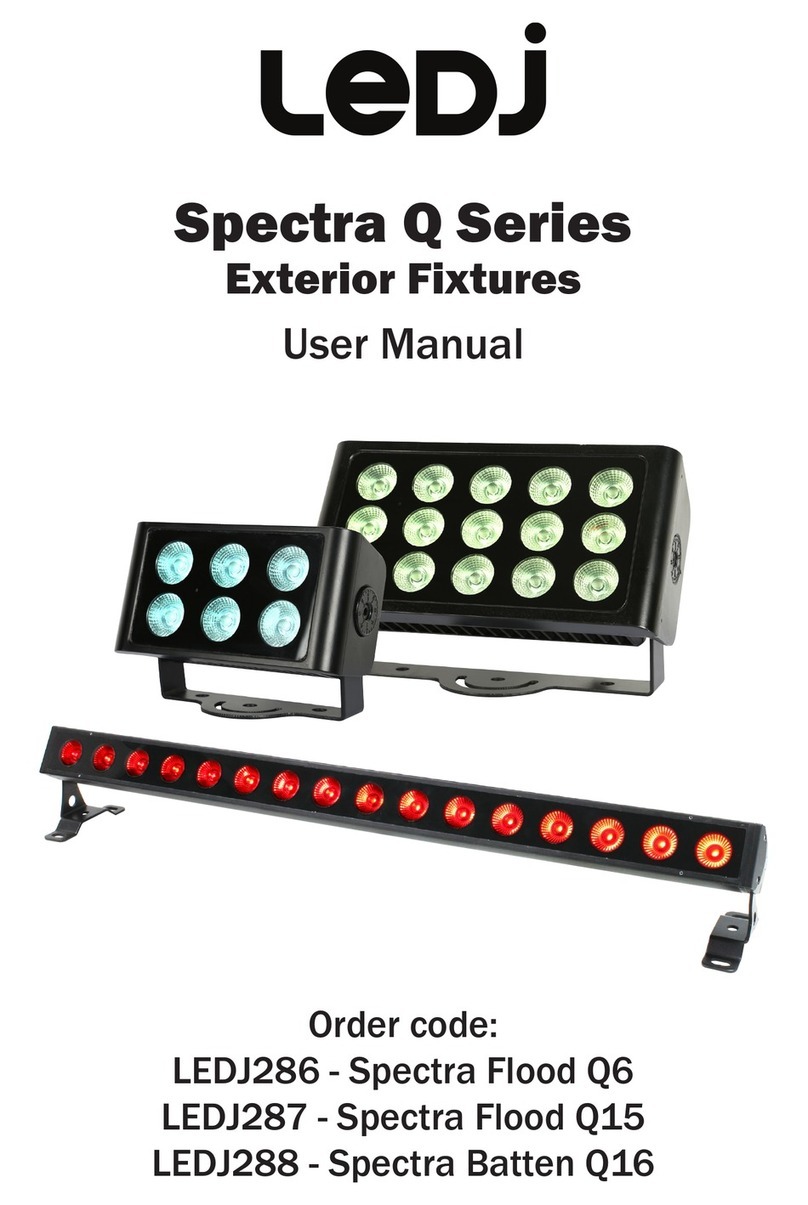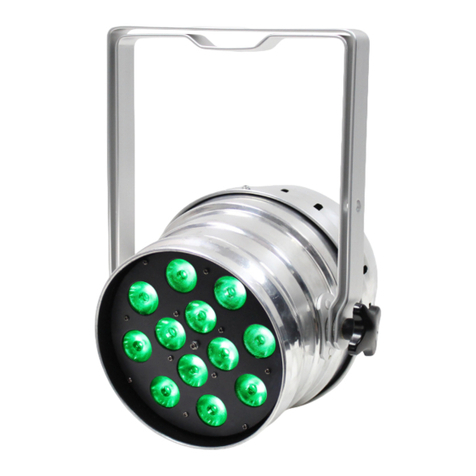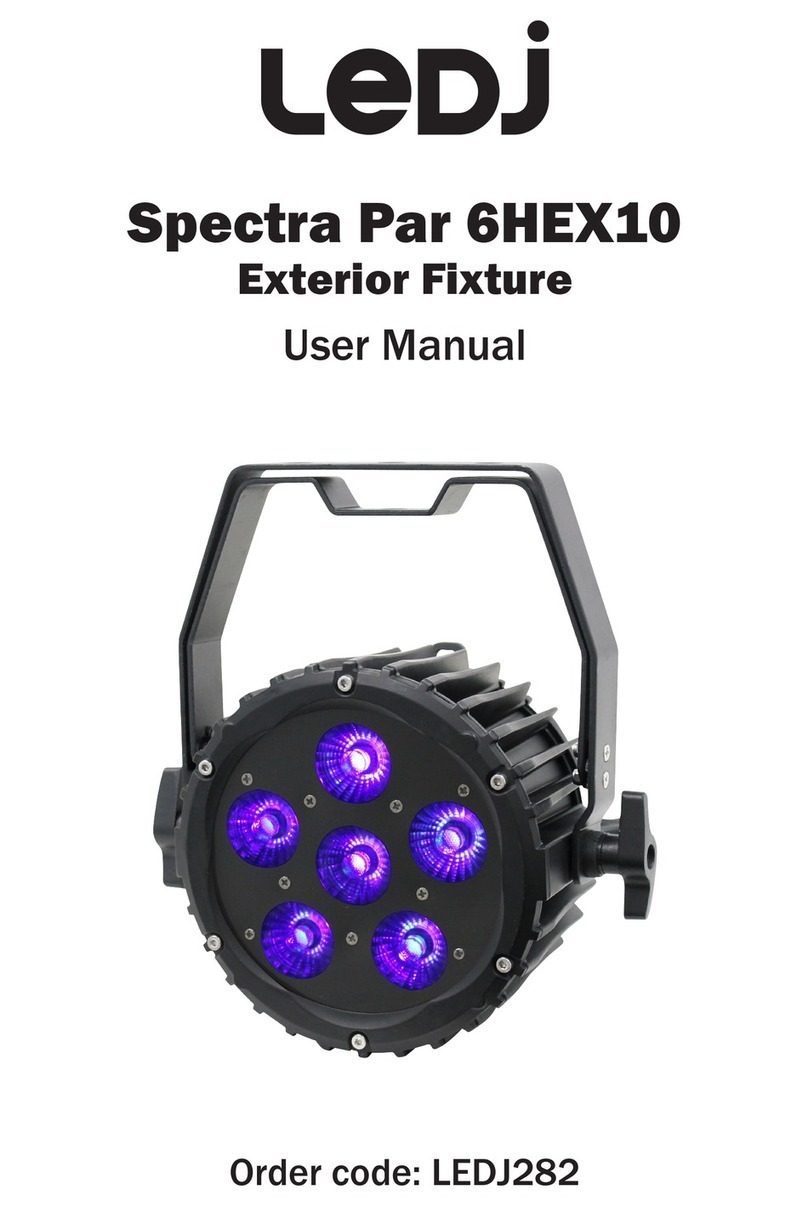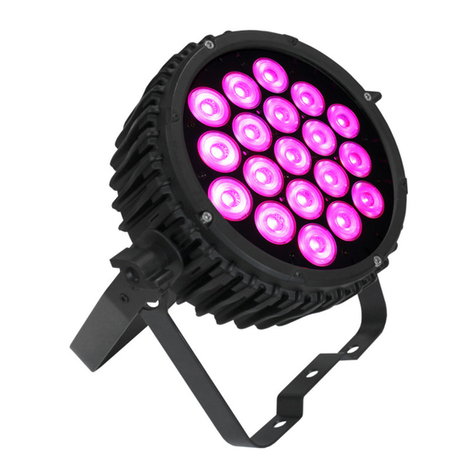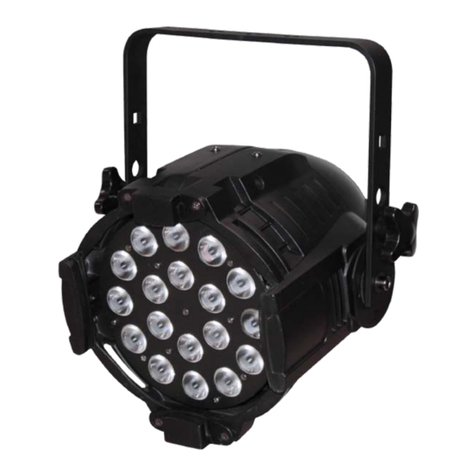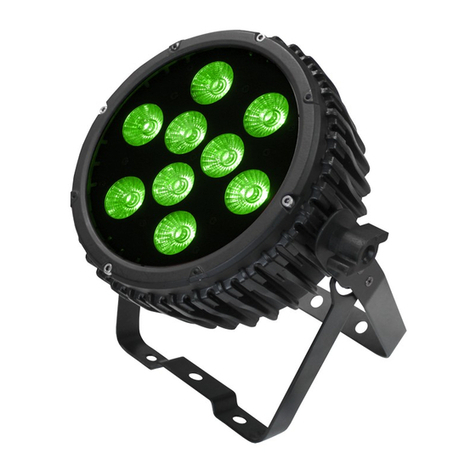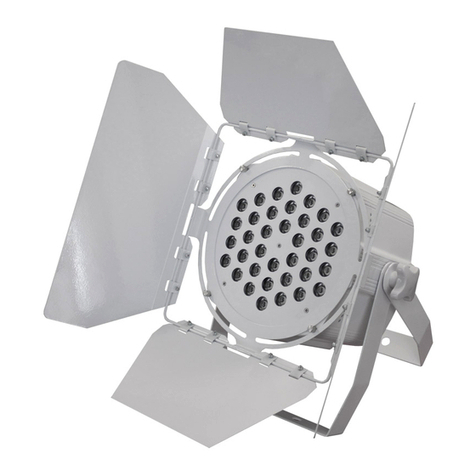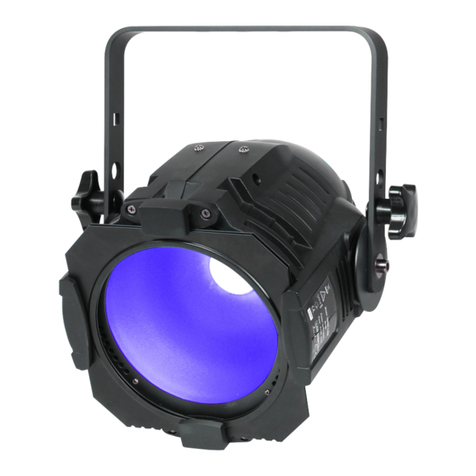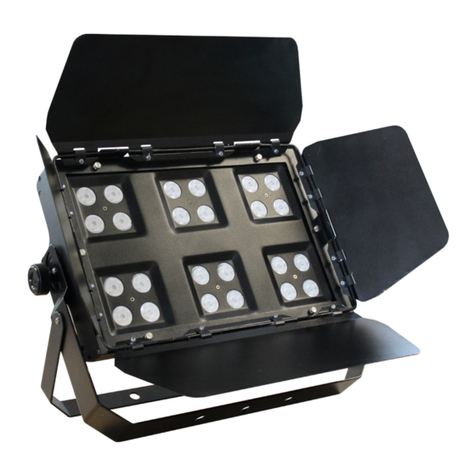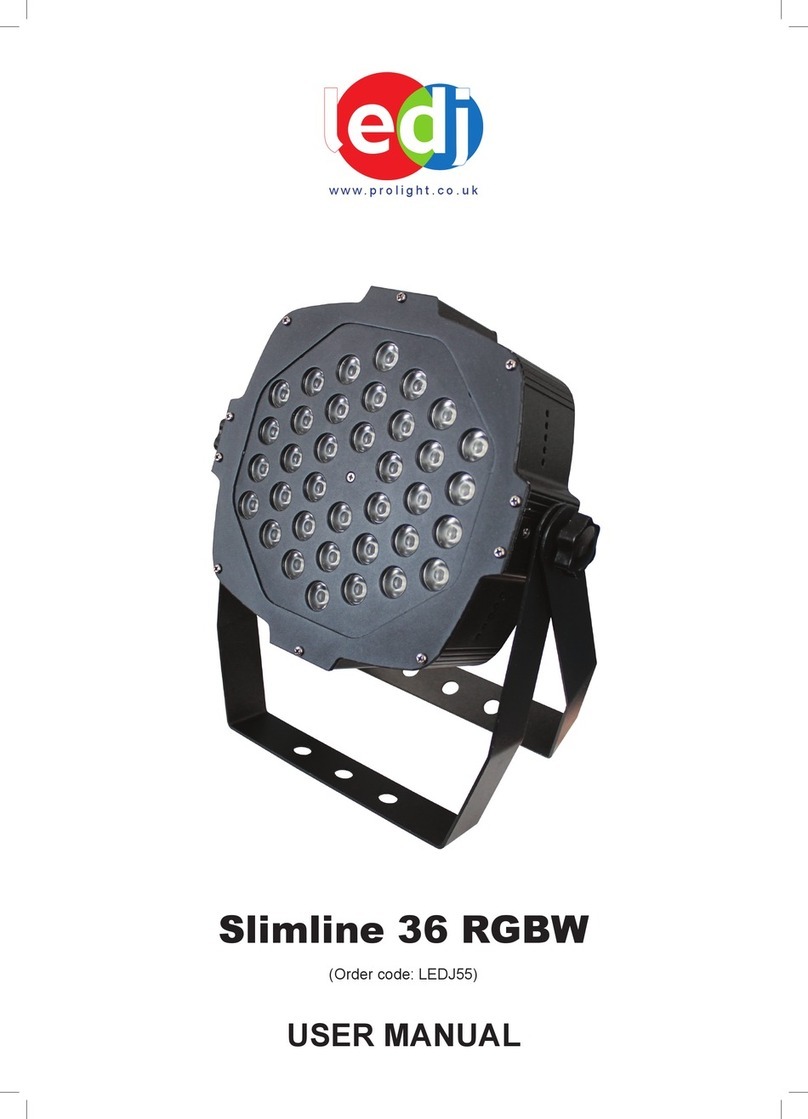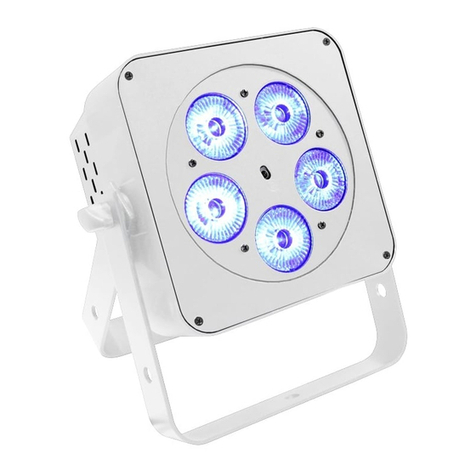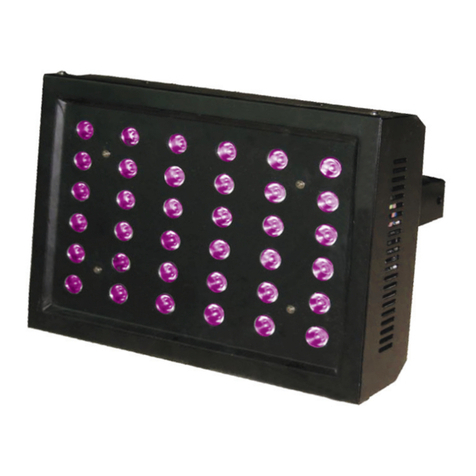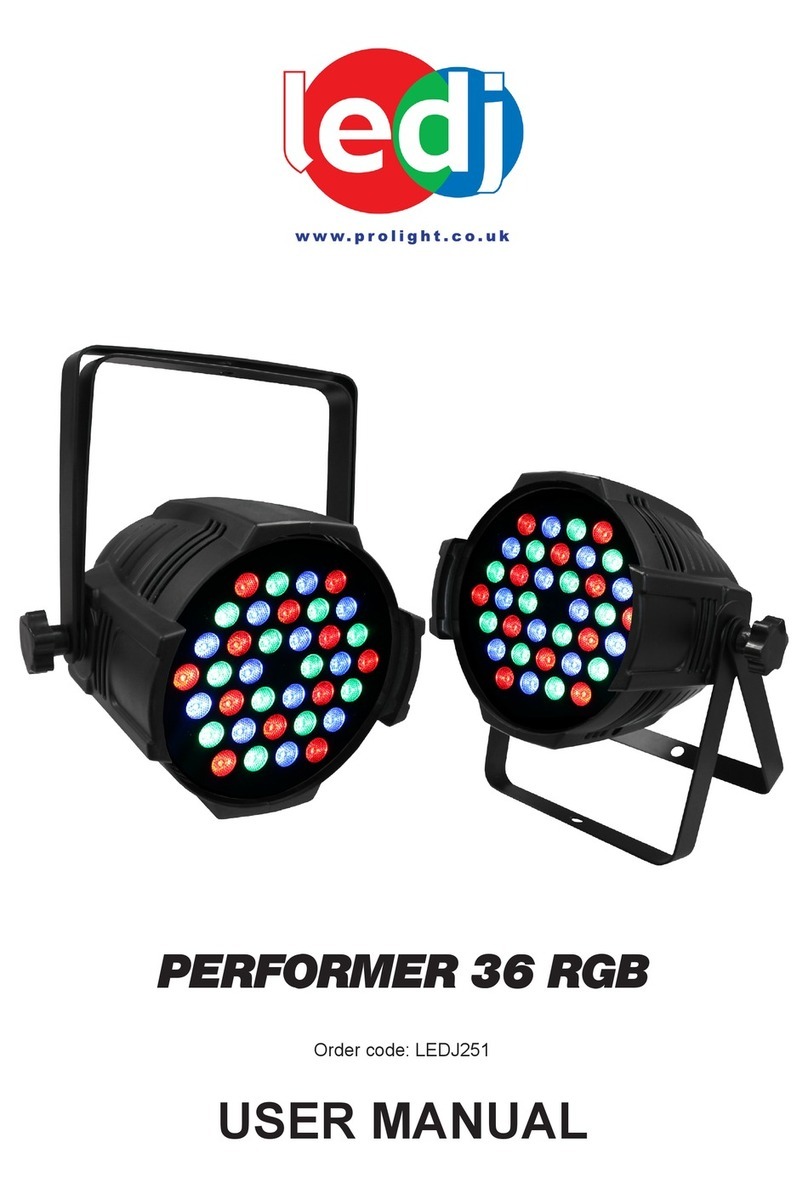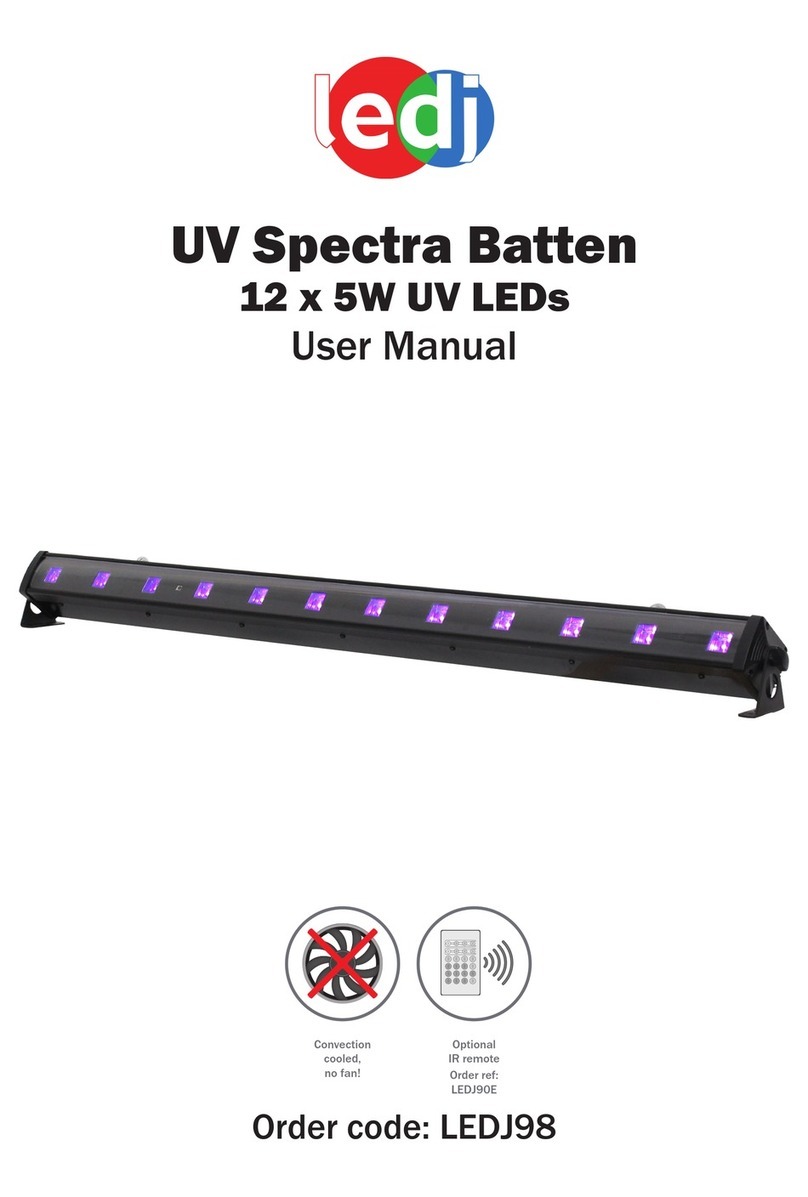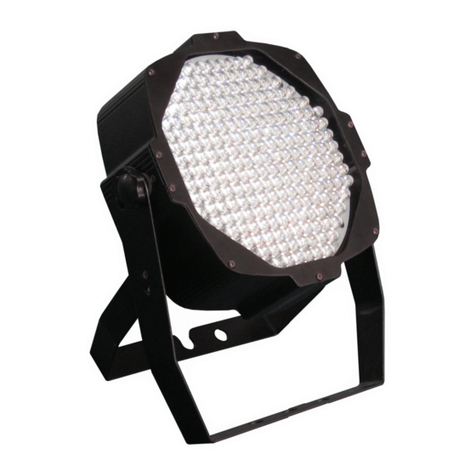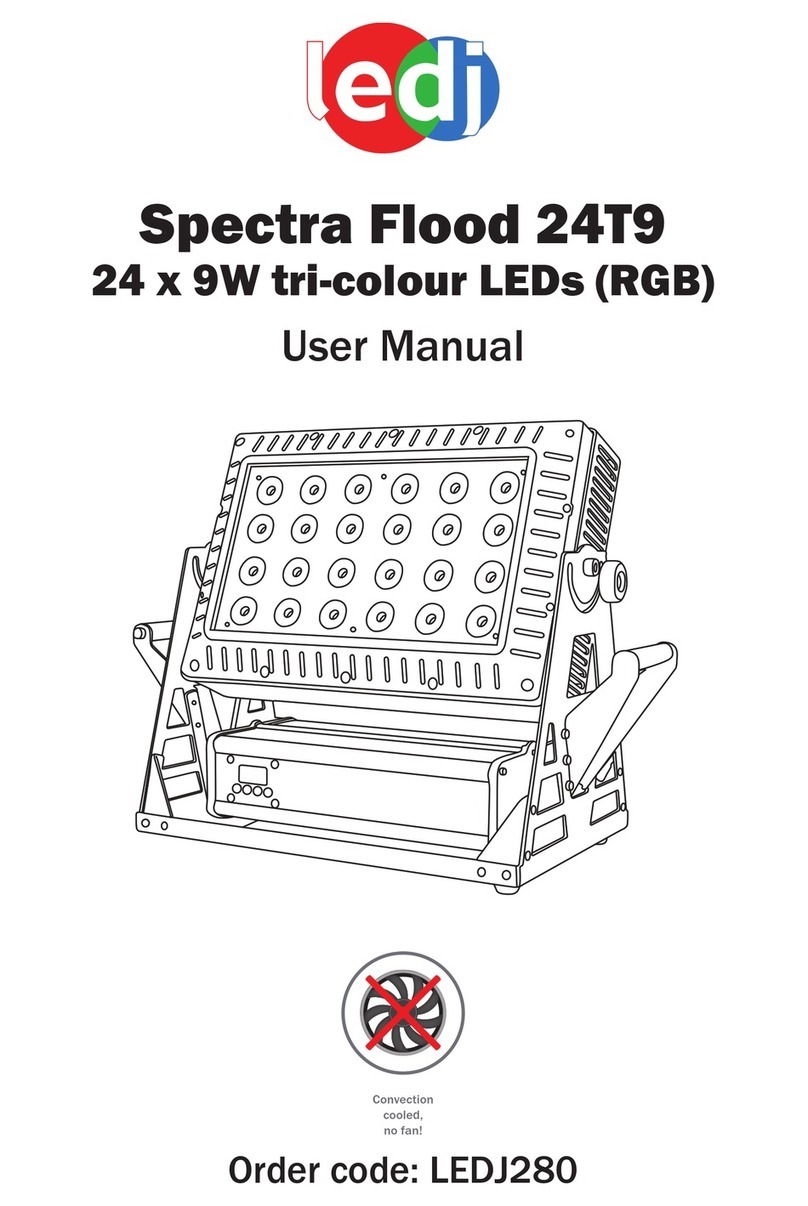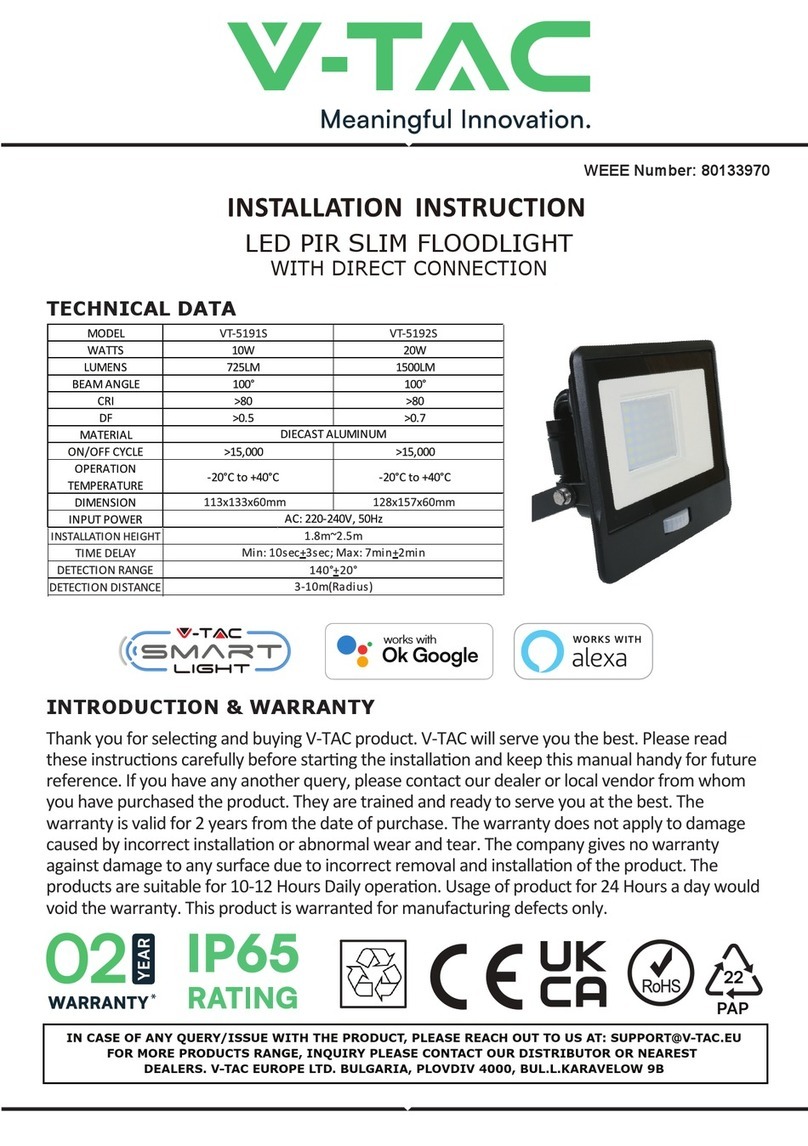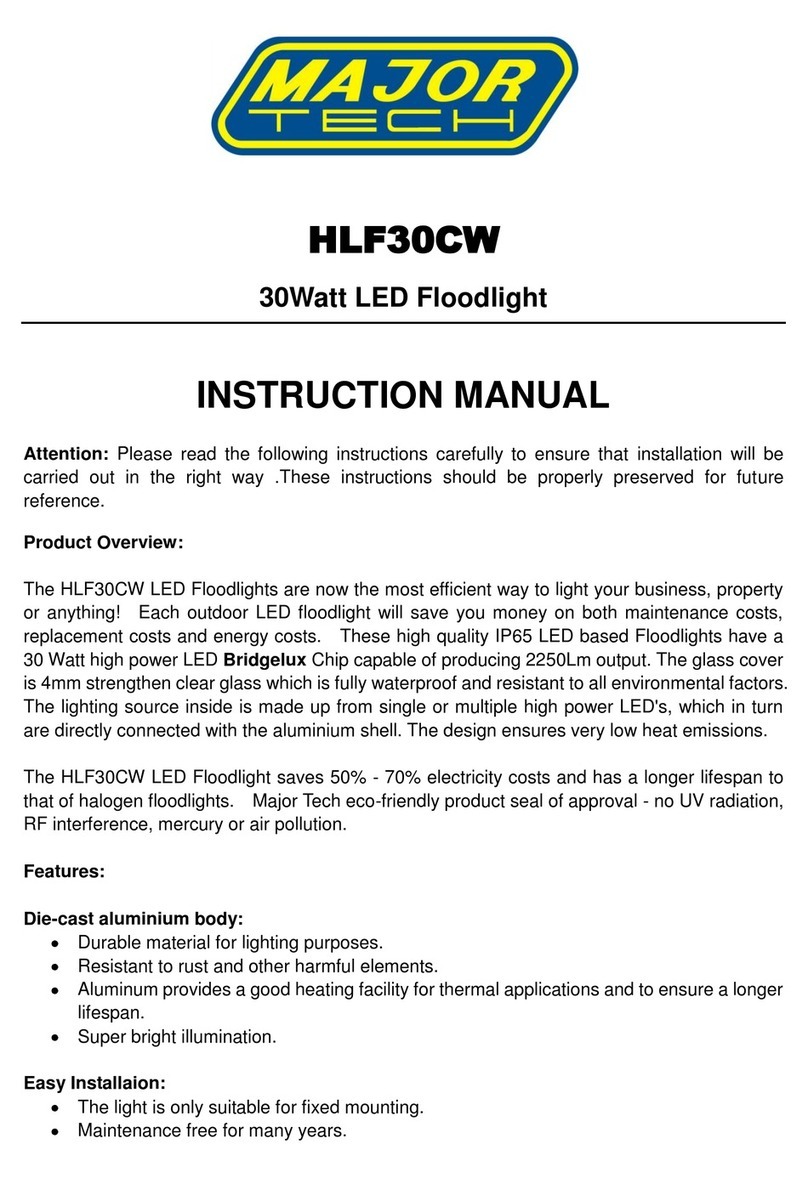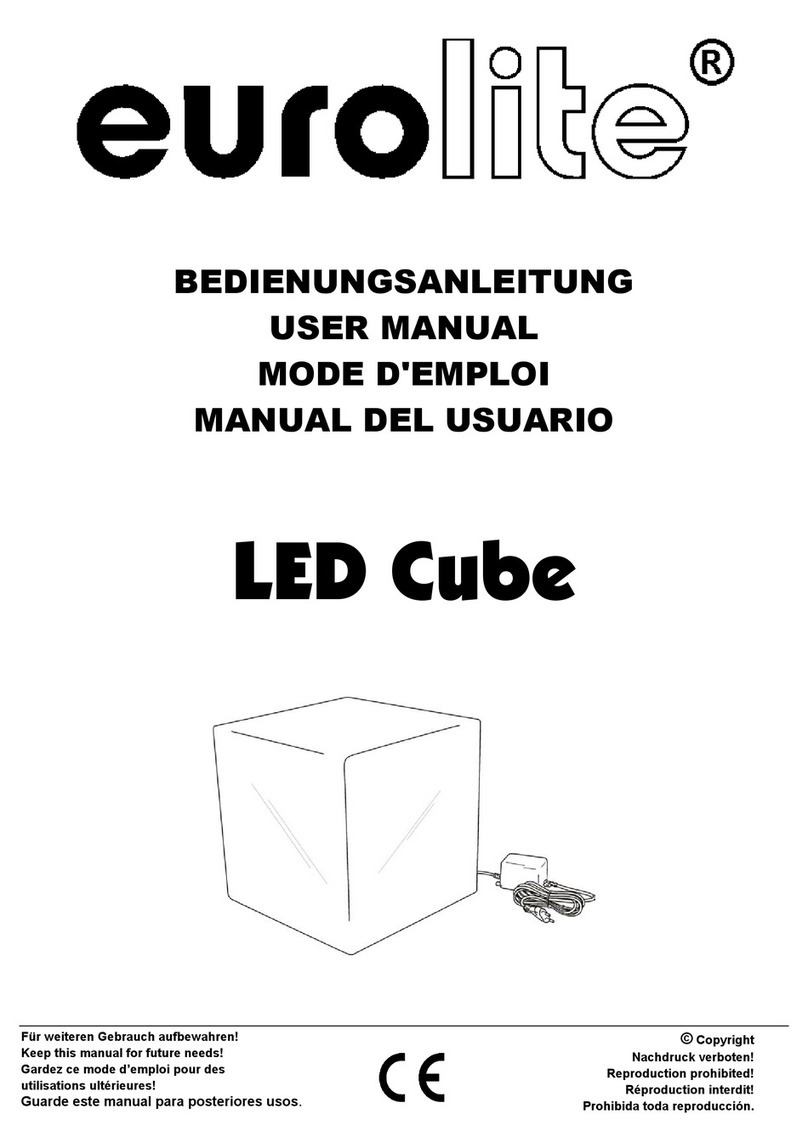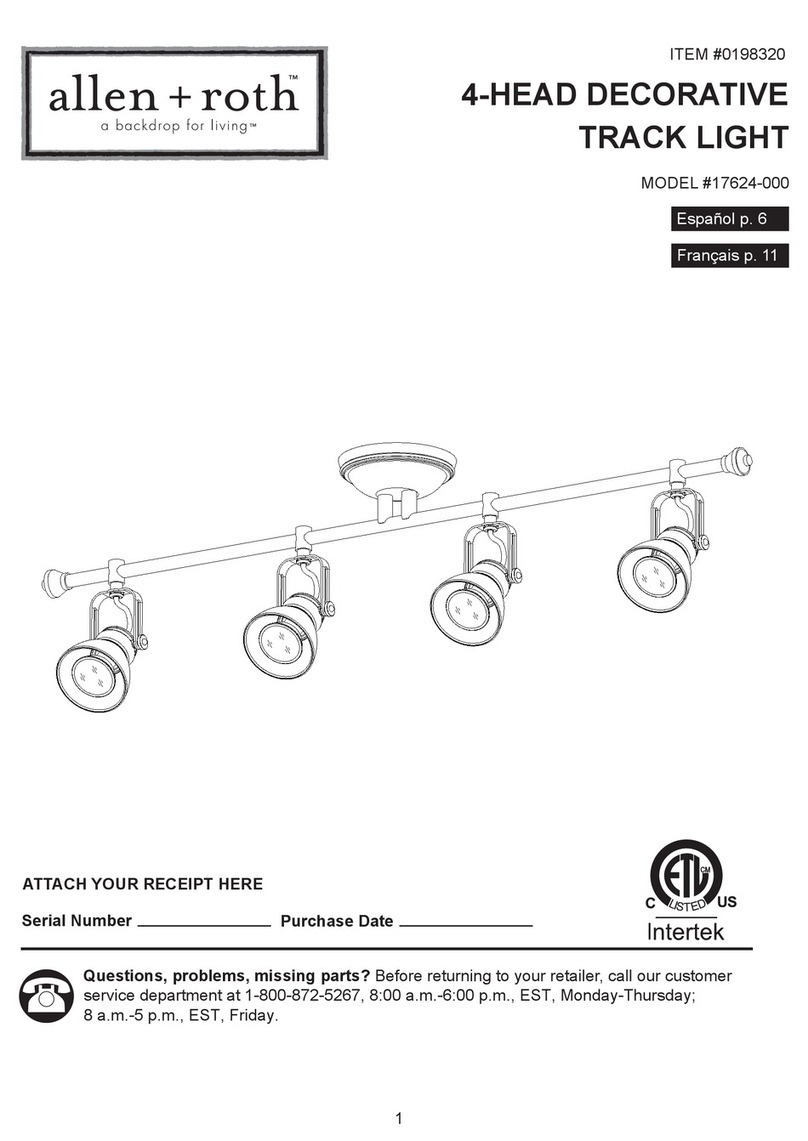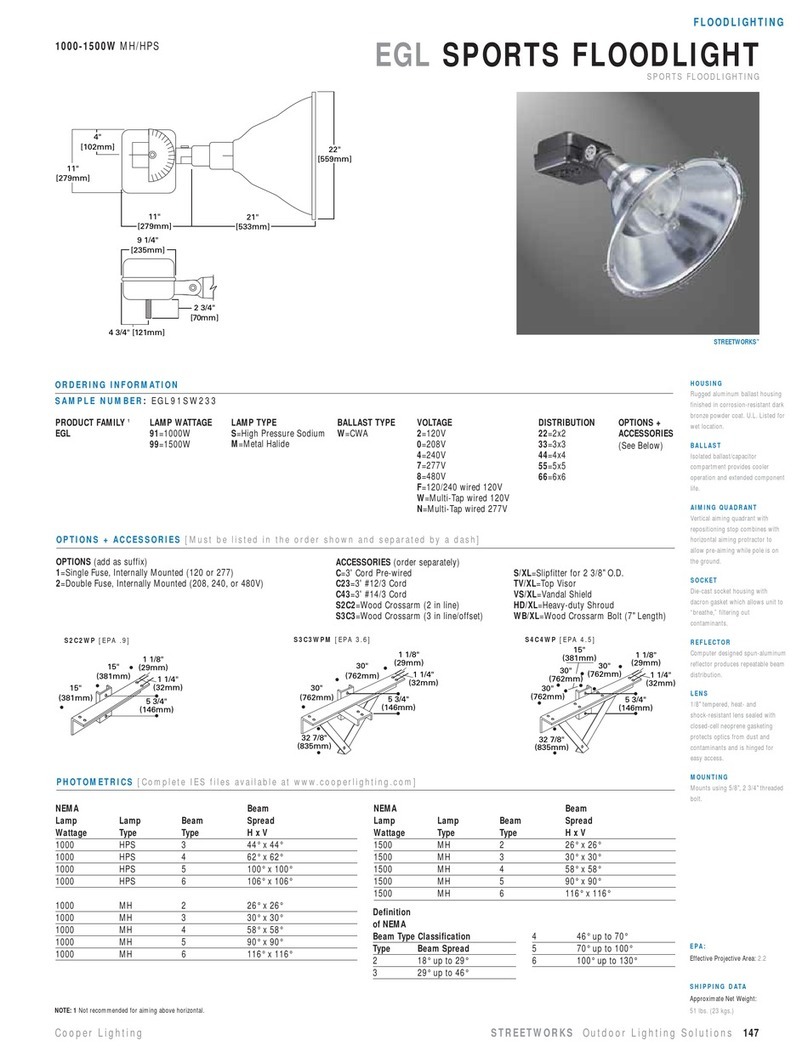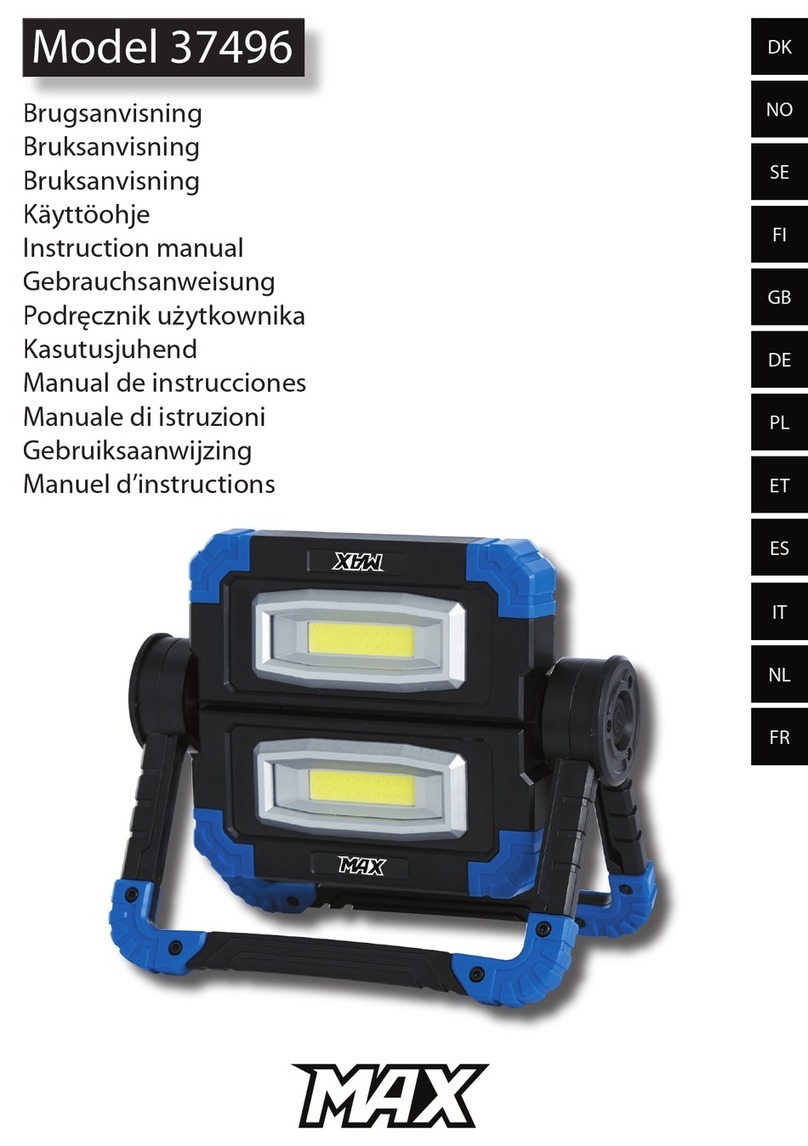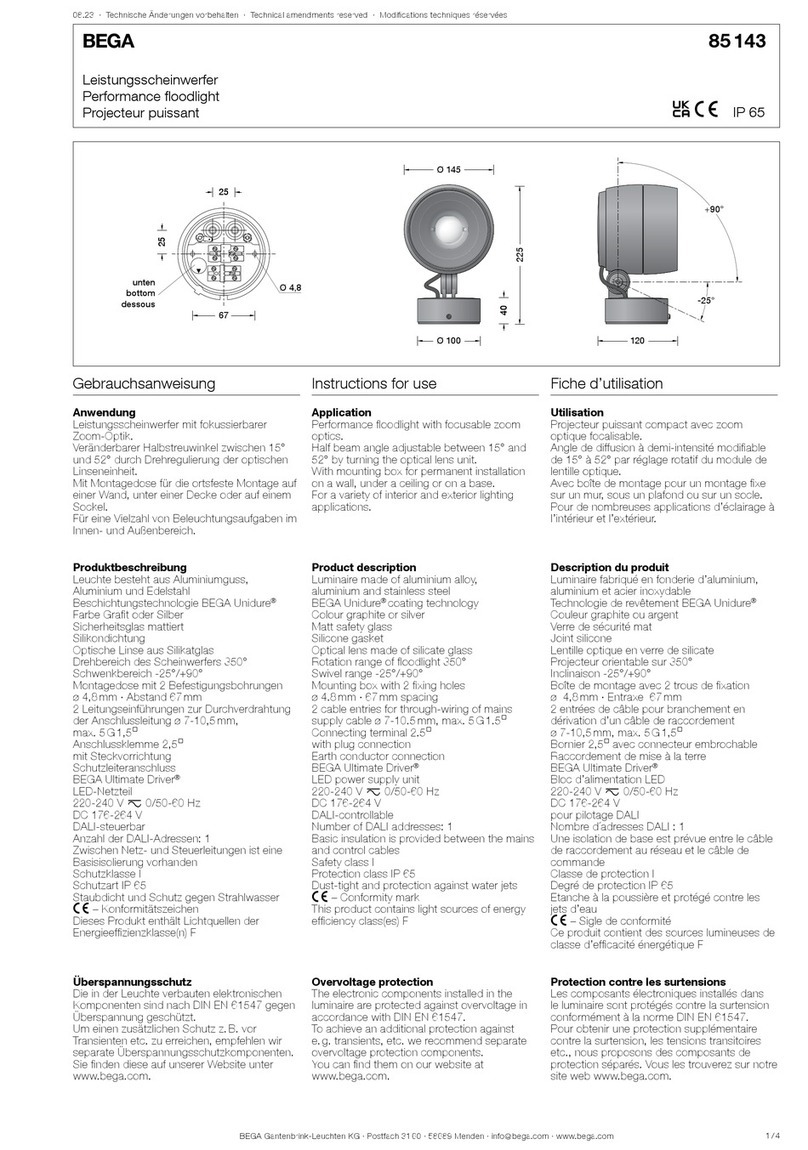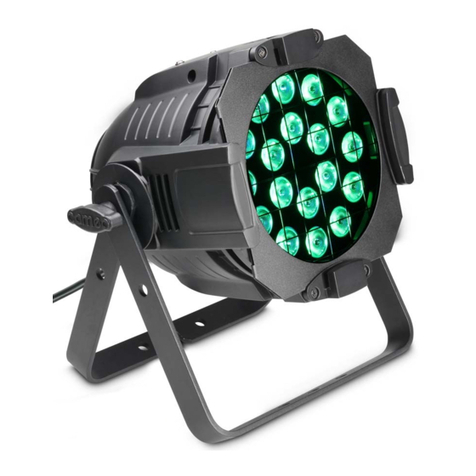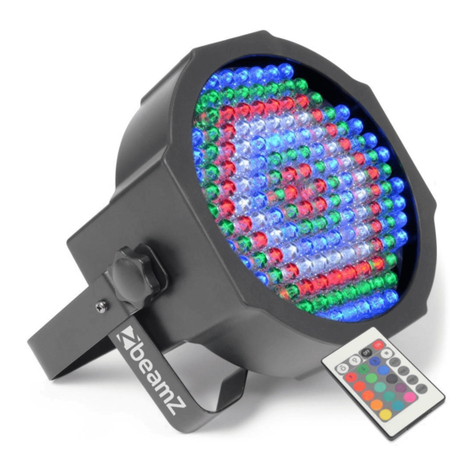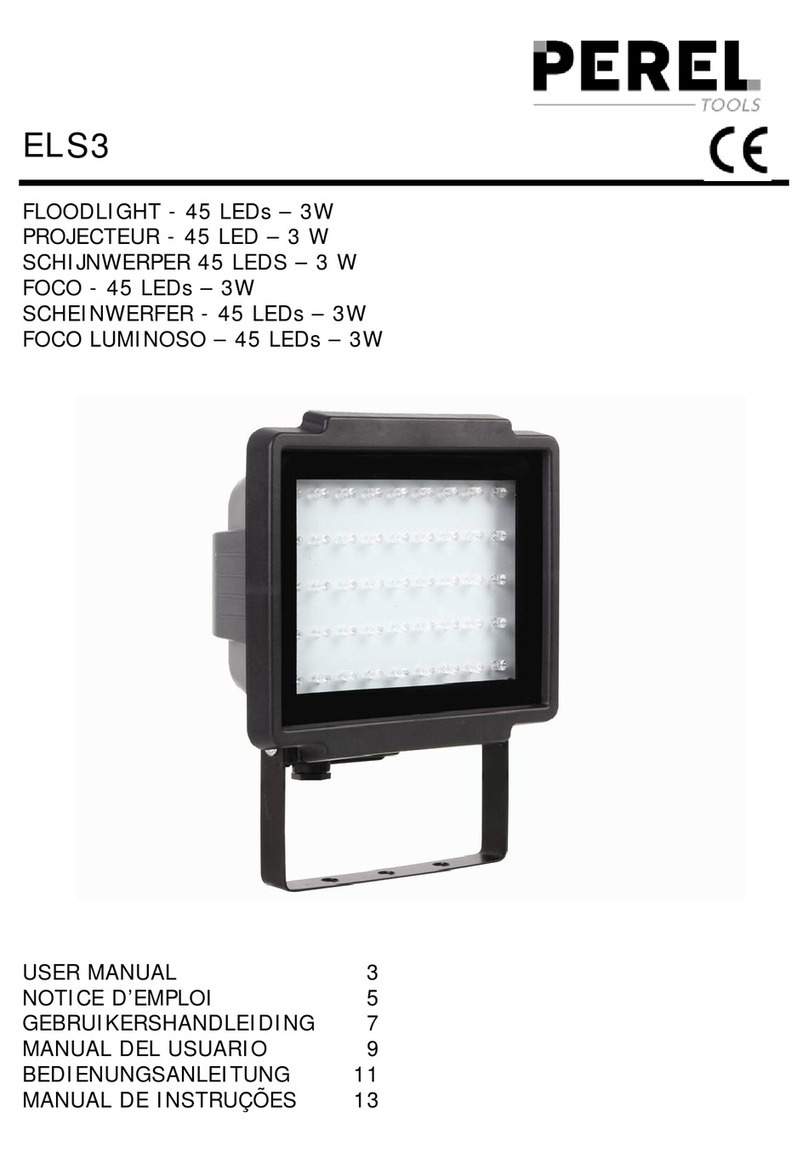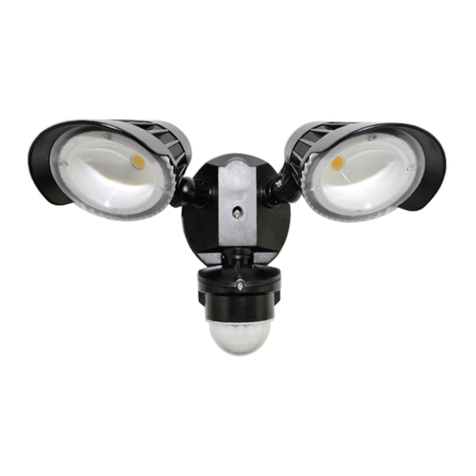6.
I.R Remote (purchased separately: LEDJ90C)
Functions:
The “BLACKOUT” button is used to set the LEDs into the power on or off modes.
The “S PR” button is used to run the built-in programmes. To go though the built-in programmes, press the
“+” and “-” buttons.
The “FL” button is used to set the LEDs to ash on and off, to change the ash frequency use the “+” and
“-” buttons.
The “SP” button is used to set the run speed, this button is available only in the colour change or colour
fade modes. To change the speed use the “+” and “-” buttons.
The “D” button is used to set the LEDs into DMX mode. (See DMX value table)
The “SA” button is used to set the LEDs into sound activated mode.
The “SL” button is used to set the LEDs into slave mode.
The “S”, “0”, “1”, “2”, “3”, “4”, “5”, “6”, “7”, “8” and “9” buttons are used to set the DMX address for
the LED’s.
The “R”, “G”, “B” and “A/W” buttons are used to set the brightness for the Red, Green, Blue and Amber/
White LEDs, to change the brightness use the “+” and “-” buttons.
DMX Address Examples:
To set the DMX address “245”;
1) Press the “S” button, so the red LEDs come on, this means you can now start to set
the DMX address.
2) Press the “2” button, so the green LEDs come on, this means the rst digit “2”
(the hundreds place) setting is successful.
3) Now Press the “4” button, and the blue LEDs will come on, this now means that the second
digit “4” (tens place) setting is successful.
4) Now Press the “5” button, and all of the R, G, B, A/W LEDs will come on, this means
that the nal digit “5” (units place) setting is successful and the full DMX address setting
has been changed
5) Now press the “DMX MODE” button to save the new address into memory.
To set the DMX address “002”;
1) Press the “S” button, so the red LEDs come on, this means you can now start to set
the DMX address.
2) Press the “0” button, so the green LEDs come on, this means the rst digit “0”
(the hundreds place) setting is successful.
3) Now Press the “0” button, and the blue LEDs will come on, this now means that the second
digit “0” (tens place) setting is successful.
4) Now Press the “2” button, and all of the R, G, B, A/W LEDs will come on, this means
that the nal digit “2” (units place) setting is successful and the full DMX address setting
has been changed.
5) Now press the “DMX MODE” button to save the new address into memory.
Important notes:
• Set the DMX address on each xture before plugging into the DMX controller.
• The I.R Remote is not usable when the xture(s) are being controlled by a DMX controller.
• The maximum transmitter distance is 10M. Please make sure that you have the
I.R remote aimed directly at each xture to be programmed,
• If you do not press the “DMX MODE” button after you have changed the DMX address,
when you power down the xture it will lose the address you have set.
Quad illuminator Optional I.R. Remote Functions
